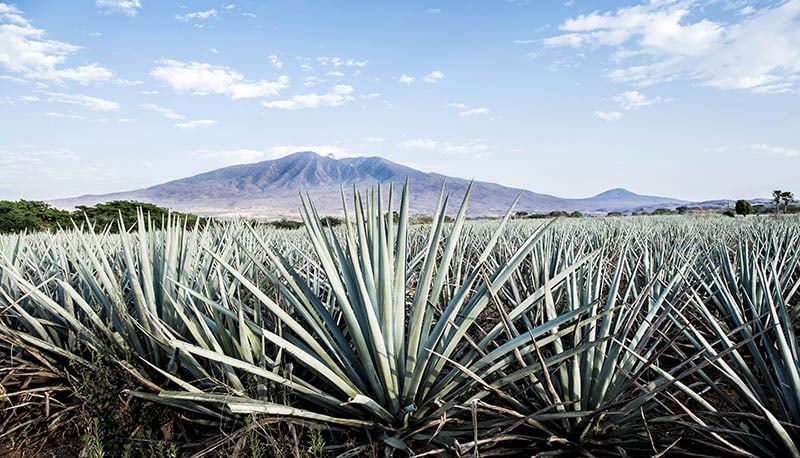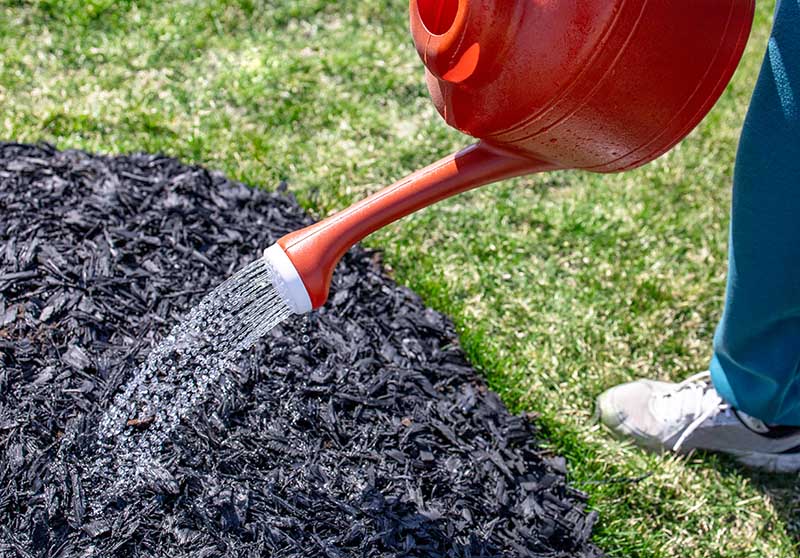How To Care for Agave Plants – 7 Planting & Growing Tips
-
Lindsey Lawson
- Last updated:

There are over 200 known species of agave plants worldwide and they are native to the warm, arid regions of the Americas and the Caribbean, though the same may also be found in more tropical areas. They make very popular garden plants and even houseplants because of their unique look.
Agave plants have very similar care requirements regardless of which kind you are working with. Here we are going to go over some planting and growing tips for agaves so that your plant is set up to thrive. It’s still very important to research the specific species you are growing so that you can provide your plant with optimal care.
The 7 Expert Tips for Agave Plant Care
1. Choose the Right Soil

To successfully plant and grow an agave plant, you will need to provide them with slightly acidic, well-draining soil. These drought-tolerant plants are native to more arid, desert-like climates so they will thrive best in more sandy or rocky soils
Poor soil drainage can easily lead to root rot, which can kill the agave. Well-draining cactus soils are typically the go-to for planting agave and the ideal soil pH range is 6.0 to 6.8. There will need to be drainage holes in place for any plant placed in a pot.
2. Provide Lots of Sunlight
Agave plants need to be placed in an area that receives full sun. They will thrive best when they are exposed to at least 6 hours of direct sunlight each day. They can tolerate partial shade, especially if they are younger plants or if the shade is provided it is during the hottest part of the day.
Indoor agave plants will do best if they can be placed outside to receive full sun at least every 2 days unless the temperature is unsuitable. They will require special attention during the winter and should be placed directly under a window to get as much light as possible.
You may even need to move the plant around throughout the day to make sure it gets enough sun. You will quickly notice if your agave is not getting enough sunlight because it will begin to droop.
3. Water Sparingly

When you are first getting a young agave plant established, it is best to water it once every 4 to 5 days for the first month. You can then scale back the watering gradually to once per week and then once every other week. For outdoor plants, be mindful of how much rainfall you are getting as you do not want to overwater.
Mature agave plants are extremely drought tolerant and only need to be watered if they’ve gone through a long period without any rainfall. Generally, mature agaves will only need watering about once per month or whenever the soil dries out about halfway.
Watering frequency can increase during the summer months, which is their active growing season. During this time watering once every 2 weeks is recommended. Again, be careful not to overwater as this could quickly lead to root rot.
4. Maintain Proper Temperature and Humidity
Agave plants are found in arid climates that have low humidity and very mild winters. The majority of agave plants grow in USDA hardiness zones 8 or 9, though there are some exceptions like the Agave parryi, that are perennial to zone 5. These plants are not cold-hardy and will not tolerate frost, so you must keep them under the correct temperature and humidity for successful growth.
If an agave is grown outside its USDA hardiness zone, it will need to be wintered indoors before the first frost hits. They can be kept in a well-draining pot or container near the brightest window in the house. Avoid placing them in any drafty areas.
Ideally, these plants should be kept in temperatures ranging from 70 to 80 degrees Fahrenheit during the spring and summer and no cooler than 50 to 60 degrees Fahrenheit during the fall and wintertime.
5. Avoid Fertilizer

Though some agaves are repeat bloomers, most species of agave plants will only bloom once in their lifetime and die shortly afterward. For those that bloom only once, it can take anywhere from 10 to 25 years for the bloom to occur, depending on the climate.
Providing fertilizer is typically not recommended for agave plants since feeding will encourage flowering and most agaves will die after they flower. Fertilizer may be provided by some gardeners when the plants are very young, but even this isn’t necessary. Anyone wanting their agave to live for a long time will put off flowering for as long as possible.
6. Protect the Plant from Pests
Thankfully, agaves are more resistant to pests and diseases than some other plants but one pest, in particular, can cause lots of problems. The agave snout weevil is known to burrow in the center of the plants to lay its eggs, which ultimately causes the plant to collapse and die.
These weevils are very difficult to detect and most often they will go undetected until it’s too late to salvage the affected plant. To protect other agaves from the spread of these pests, remove the affected plant entirely.
Also known as the Sisal weevil, they are distributed throughout the southwestern United States and Mexico. They will feed on many species of agave plants and other plants in the same family. An adult snout weevil is a large black beetle with a long, pointy snout.
Unfortunately, you probably won’t notice this until it’s too late to save the plant. So instead remove the plant to avoid the pests spreading to any other agaves you might have.
7. Repot Every Other Year

Agave plants have shallow roots much like other succulents, which means they don’t need excessive amounts of soil when kept as potted plants. It is recommended that you repot either once every year or once every other year as your plant matures.
The ideal time for repotting is during the spring or summer, as the seasons provide optimal growing conditions. Repot to a slightly larger container and use fresh soil. Once the agave matures, you can keep it in the same container but make sure to keep up with repotting every couple of years to provide it with fresh soil.
Agave at a Glance
| Family: | Asparagaceae |
| Type: | Succulent, Perennial |
| Size: | Height: 1–20 feet
Width: 1–10 feet |
| Soil Type: | Sandy, well-draining soil |
| USDA Hardiness Zone: | 8–10
5–10 (Agave parryi) |
The Most Popular Types of Agave Plants
The range in size and appearance in the agave species is expansive, including:
Century Plant (Agave Americana)
The Century Plant is native to the Southwestern United States and Mexico. It reaches anywhere from 3 to 6 feet in height and has a 6 to 10-foot spread at full maturity. It has grayish-green leaves and thrives in USDA hardiness zones 8 to 10.
Blue Agave (Agave tequilana)
Blue agave is a very popular plant that is best known for its use in crafting tequila. It is also a very nice-looking garden plant that reaches about 6 to 8 feet in both height and width when fully mature. They are native to the Caribbean and many regions across Mexico.

Foxtail Agave (Agave attenuate)
The Foxtail Agave is a native Mexican species that is a very popular spineless variety. It is also referred to as the dragon-tree agave and features light blueish-green leaves. It grows around 4 to 5 feet tall and can reach between 8 and 10 feet wide.
Smallflower Century Plant (Agave parviflora)
The small century plant is a rare species with a very limited distribution in southeastern Arizona and northern Mexico. The State of Arizona considers it endangered and has protections in place. It is the smallest agave plant with small leaves that have white markings and curling filaments, making it look hairy. It only reaches about 6 inches tall and 6 to 8 inches across.
Queen Victoria Agave (Agave victoria-reginae)
Queen Victoria Agave, also referred to as Royal Agave, displays deep green leaves and is found throughout the Chihuahuan Desert in the Mexican States of Coahuila, Durango, and Nuevo Leó. It reaches a size of about 1 foot tall and 1.5 feet wide.
Parry’s Agave (Agave Parryi)
Parry’s Agave is a species native to western Texas, Arizona, New Mexico, and northern Mexico. It is typically found at elevations ranging from 4,000 to 8,000 feet. This plant grows to about 2.5 feet tall and 3.5 feet wide and displays grayish-green to blueish-silver leaves. This is the cold hardy agave plant, reportedly surviving in USDA zone 5 with dry cold temperatures as low as -20 degrees Fahrenheit. It’s still not recommended to try your luck with extremely cold temperatures.
Conclusion
Planting and growing an agave plant requires knowledge of the genus. There are plenty of different species of agave, but they all come from arid environments that get lots of sunlight and have very mild winters. Knowing your species and following these specific care requirements will set you up for the successful growth and development of these beautiful, unique succulents.
Featured Image Credit: Jesus Cervantes, Shutterstock
Contents

